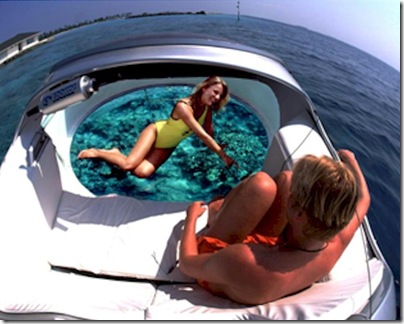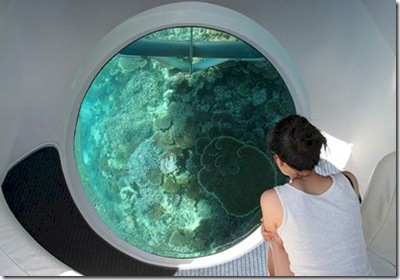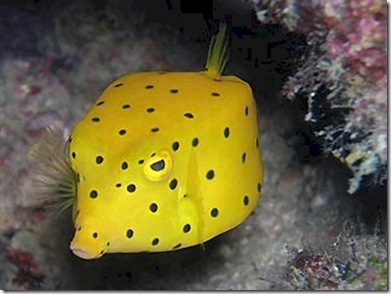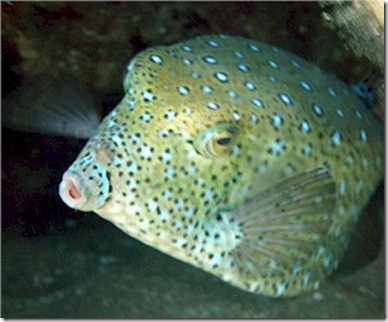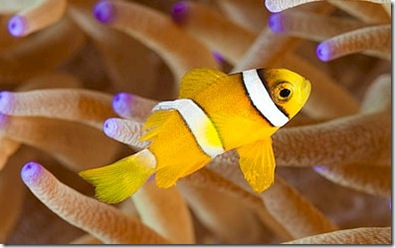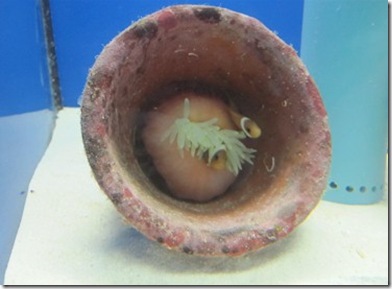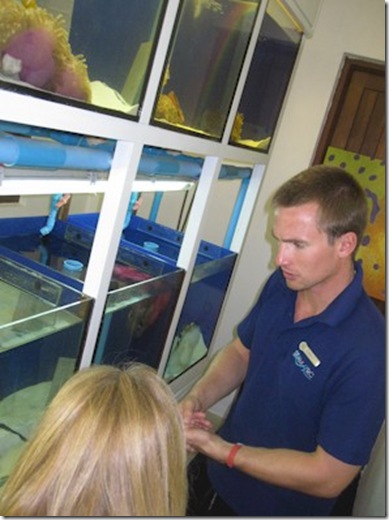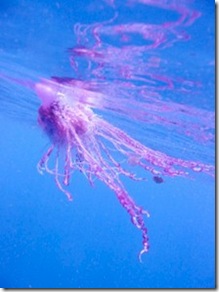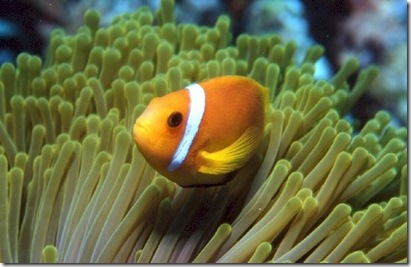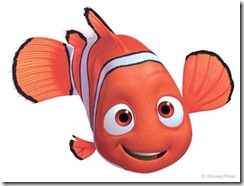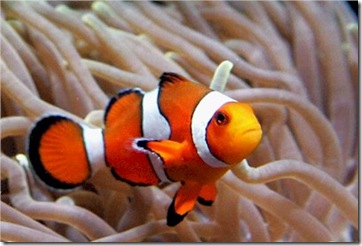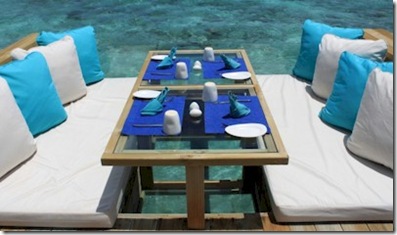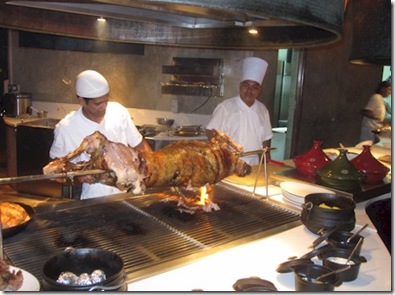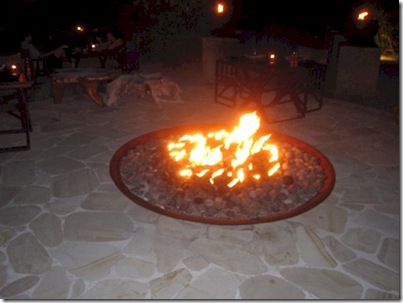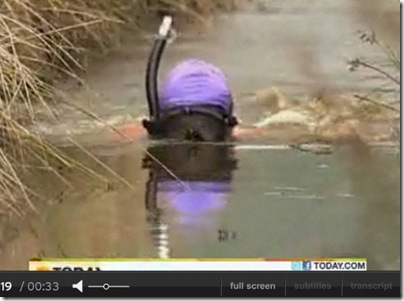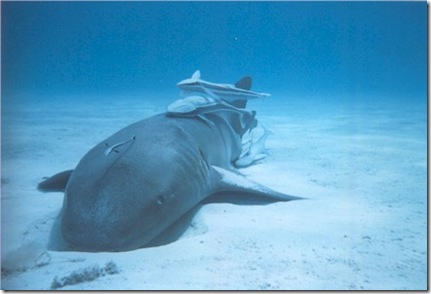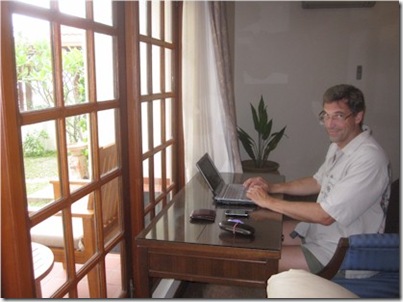Unparalleled snorkelling and work class diving aren’t the only way to explore all of these QI curiosities in the Maldives. If you don’t want to spoil your finely coiffed ‘do, then consider a glass bottomed boat excursion. A number of resorts offer them – Reethi Beach, Kurumba, Baros, Conrad Rangali, Paradise Island, Coco Palm Dhuni Kolhu and Taj Vivanta Coral Reef.
But the top of the line in this unique class of ocean vessels is the Paritetboat brand which both Paradise Island (photo above) and Conrad Maldives Rangali (photo below) feature.
“Paritetboat company developed unique ultra-durable bottom window shaped as an optically regular spheroid of never seen before size 2×3 m – it is the biggest size all over the world. Our glass is made of modified acrylic and has thickness 15 mm it’s more solid than fiber glass boat hull. It allows to enlarge field of view dozens times as compared to ordinary glass bottom boats. For instance, field of view at 9 meter depth is half basketball playground size.”

